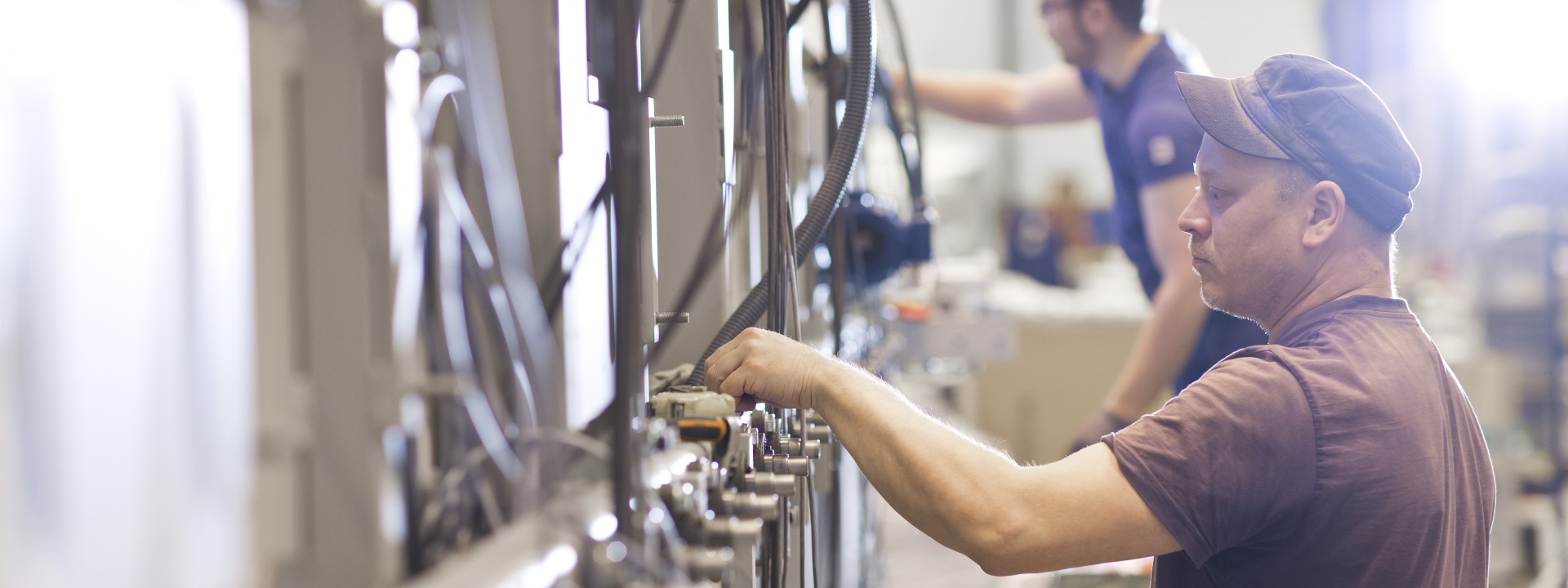
If your glass processing equipment is not running, it’s costing you money. No matter what production technology you have. You’ll miss your delivery times, probably risk losing your customers or at least lower their satisfaction. It’s worth taking a look at your maintenance process. In essence, the main purpose of maintenance is to ensure that your equipment is operating at full production efficiency at all times – which simply means that it is continuously making you money.
Choosing the right maintenance strategy – your way to keep your money-maker running.
Before going into maintenance solutions, the first thing for you to decide on is your maintenance strategy, in other words, the way you manage your maintenance.
In short, there are two main things to consider:
The question of who is about whether you will carry out maintenance with your own people or if you will outsource it. Both can get you excellent results. The best solution depends on your overall situation. Here are couple of points to consider:
The most important point is to keep the equipment running. The cost is practically always secondary to the importance of keeping your machinery up and running. This is the case in 95% of all processing factories.
The question of how you handle your maintenance has even more of an impact on the actual result than who is doing it. There are three main options for how to carry out maintenance:
The traditional strategy for industrial equipment has been corrective or reactive maintenance. This “run-to-fail” strategy is appropriate for assets whose failure will not compromise operations and which can return to service quickly and easily.
Some equipment failures, like those of a tempering line, can shutdown the entire glass processing factory. A different maintenance strategy has evolved to avoid asset failures. This is called preventive maintenance. This strategy aims at preventing equipment failure from happening before it actually occurs. Preventive maintenance actions, such as a scheduled maintenance program, reduce the probability of unexpected downtime and are always equipment specific.
Full-scale preventive maintenance can be expensive. Therefore, a new maintenance strategy was developed known as condition-based or predictive maintenance. Using this strategy, the condition of the equipment is monitored regularly until it begins to show evidence of deteriorating performance. Maintenance is then performed “just-in-time” to prevent equipment failure. For example, predictive maintenance is often based on the analysis of the bearing heat signature, lubricant condition and rotating equipment vibration.
The most effective maintenance strategy should be selected by you, the person in charge of business performance – and the maintenance experts who have sufficient knowledge of the equipment and application demands.
When you consider the how for your tempering line maintenance, you need to check:
Get a strategist for your maintenance – and maintenance can turn into your competitive advantage!
Stay tuned for the second part where we go through how you can increase your productivity and production uptime with spare part arrangements and continuous knowledge building.
If you want to learn more today, contact us to get free guidance on how your maintenance can be handled.
注册 Glastory 快讯
我们回答您关于玻璃加工的问题。将您遇到的困难告诉我们,我们一定尽全力帮助您。
Comments are closed.